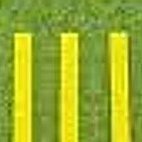Thai Massage
-
Recently Browsing 0 members
- No registered users viewing this page.
-
Topics
-
-
Popular Contributors
-
-
Latest posts...
-
178
Road Rage (Foreigner Style)
Maybe his dad used to take him to the dodgems when he was 7? -
8,377
-
178
Road Rage (Foreigner Style)
Never fear, Jake. I promise to give your pedal car a wide berth next time I pass you on the ring road. -
8
CMN > Links to +20 recent noteworthy Vaccine disaster articles
The plague......? -
3
Scotland - Alarming Increase in Strokes since 2020
No such thing as covid. And obviously long-covid is the same. Sorry to hear about your wife Sir. Perhaps send me a PM and I might be able to give an insight. -
178
Road Rage (Foreigner Style)
After a recent holiday in the UK i could see how different people drive when they had to pass an actual test It was amazing to see car drivers keeping in lane at roundabouts rather than just cutting straight across Hard shoulders were clear of all the dmax/Revos Hardly surprising the amount of drivers lose their lives daily here my son recently broke his collarbone when a car pulled straight out into him with no chance of braking Keep saying i will buy him a car but even thats not much safer here
-
-
Popular in The Pub










Recommended Posts
Create an account or sign in to comment
You need to be a member in order to leave a comment
Create an account
Sign up for a new account in our community. It's easy!
Register a new accountSign in
Already have an account? Sign in here.
Sign In Now